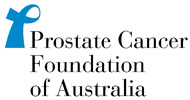The role of multi-parametric prostate MRI
A guide for GP's written by urologist: Dr Thomas DeanThe ongoing controversy about the need for using PSA for early diagnosis of prostate cancer rages on unabated. There were three articles in the June 2013 edition of the MJA in relation to prostate cancer screening. One of the concluding statements in the article by Martin et al is pertinent to the current debate: “a major issue applicable to all evaluations of PSA screening is the lack of a reliable test for determining the subset of screen detected prostate cancers that warrant radical treatment. A test that could reliably distinguish prostate cancers that are both amenable to radical local treatment and likely to be morbid and life threatening without local treatment would have a favourable impact on the effectiveness and the cost effectiveness of screening.”
In the 4 November 2013 edition of the MJA there were several pages of letters to the editor vigorously debating the same topic, yet there was not one word about the potential role of multi-parametric prostate MRI to help in the risk stratification of patients who are being screened or who are being considered for screening for prostate cancer. There is now ample evidence from Europe, which has been replicated by Thompson et al at the Wesley Hospital in Brisbane that multi-parametric prostate MRI can, with a high degree of confidence, as a non-invasive test, detect high grade cancers that should be treated. In addition, small low grade cancers are not detected thereby helping to reduce the risk of over treatment. Indeed a good quality multi-parametric prostate MRI helps to address the shortcomings of transrectal ultrasound guided prostate biopsies, namely false negative results when an important cancer is missed, false positive results when a tiny clinically insignificant cancer is detected, and misleading results when the biopsy samples the edge of an important tumour, which is then under-graded.
So what is the role of prostate MRI?
Firstly, it is crucial to understand that multi-parametric prostate MRI is only useful if it is correctly performed in a unit where there is appropriate experience both in the performance of the study and in the reporting of the results. If not patient management will be compromised and extra expense incurred for the patient.I currently refer patients to the radiology department at the Sydney Adventist Hospital where specialist radiologist, Dr David Smit has specific expertise in prostate MRI. He has trained in Europe under the guidance of Dr Jelle Barentz in the Netherlands and in November 2013 travelled to Lille in Northern France for further training under Dr Philippe Puech. Both Dr Barentsz and Dr Puech are considered world leaders in prostate MRI.
How does mp MRI help?
DiagnosisIn patients who have had a prior negative biopsy mp MRI can help to detect a tumour that has been missed. It can help in patients for whom the indications for biopsy are borderline e.g. older patients, less fit patients, raised PSA’s in a large prostate, or borderline PSA’s. Performing MRI prior to the first biopsy is somewhat controversial but I find it useful in younger fit patients particularly when there is no abnormality on DRE to indicate the likely location of the cancer, and in patients with a very large prostate. MRI guided biopsies can be performed but are expensive and are rarely necessary.
Treatment
mp MRI can help with cancer localisation, grading and staging. This information is particularly useful when planning both surgery and radiotherapy for localised cancer.
Active surveillance
mp MRI can help to select patients that may be suitable for active surveillance and also select those that are suitable to continue on surveillance safely. It is likely that the number of biopsies required for patient on surveillance will reduce if mp MRI is incorporated into the surveillance regime.
Patients should be referred for urological assessment to determine whether MRI is necessary.




